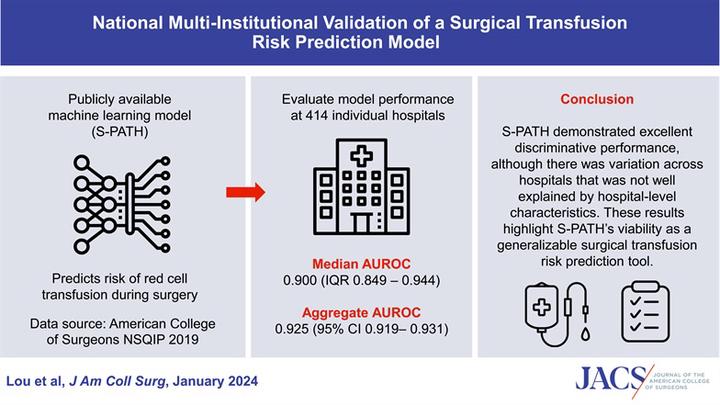National Multi-Institutional Validation of a Surgical Transfusion Risk Prediction Model

Abstract
Background Accurate estimation of surgical transfusion risk is important for many aspects of surgical planning, yet few methods for estimating are available for estimating such risk. There is a need for reliable validated methods for transfusion risk stratification to support effective perioperative planning and resource stewardship.
Study Design This study was conducted using the American College of Surgeons NSQIP datafile from 2019. S-PATH performance was evaluated at each contributing hospital, with and without hospital-specific model tuning. Linear regression was used to assess the relationship between hospital characteristics and area under the receiver operating characteristic (AUROC) curve.
Results A total of 1,000,927 surgical cases from 414 hospitals were evaluated. Aggregate AUROC was 0.910 (95% CI 0.904 to 0.916) without model tuning and 0.925 (95% CI 0.919 to 0.931) with model tuning. AUROC varied across individual hospitals (median 0.900, interquartile range 0.849 to 0.944), but no statistically significant relationships were found between hospital-level characteristics studied and model AUROC.
Conclusions S-PATH demonstrated excellent discriminative performance, although there was variation across hospitals that was not well-explained by hospital-level characteristics. These results highlight the S-PATH’s viability as a generalizable surgical transfusion risk prediction tool.